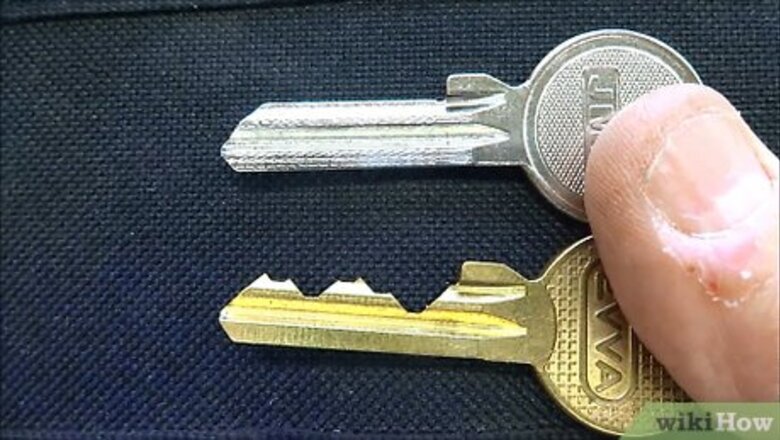
views
- Find a key that can fit inside the lock. Use a wedge or triangular file to shave down the valleys between the teeth so the key has a jagged, zig-zag appearance.
- Put the key in the lock, turn it, then hit the back of the key with a blunt object to bump the lock.
- Protect your own home from lock bumping with tamper-proof or commercial-grade locks.
Making a Bump Key

Start with an ordinary key. Find a key that fits into the lock you’re attempting to bump. The teeth of the key won’t be the right size or dimension to move the pins, so the key won’t turn, but it’s important that it be able to slide inside. Locks and keys come in all different makes, but many keys will fit into a standard cylindrical home lock. If you’re fashioning your own bump key, pick a key that you don’t use regularly. Try it out in a few cylinder locks to see if it fits before filing it to the right specifications. Lock bumping is such a potential problem because it can be performed with almost any key.
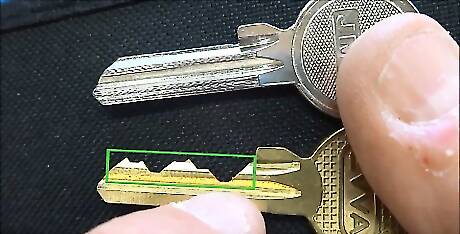
Identify the position of the valleys in the teeth. Look at the key and observe the spacing of the teeth. At the bottom of each tooth is a flat area known as the “valley” that separates the teeth. In order to be able to disengage the pins of the lock, these valleys will need to be filed down all the way to the main shaft of the key. When it comes time to modify the key, be careful not to file the valleys too shallow or deep. If the spaces between the teeth are not at the right depth, the key will be useless.
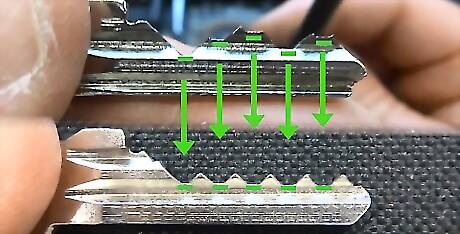
File the valleys down to their lowest position. Use a manual file (a wedge or triangular shape will work best) to shave down the valleys between each tooth on the key. The key should have a jagged, zig-zag appearance when you’re finished. Once the valleys are as deep as they can be, the teeth will be long enough to push up the pins in the lock when the key is struck a certain way. Locksmiths refer to keys that have been ground down to a serrated pattern with sharp, even peaks and valleys as “999 keys.” Pre-cut bump keys can also be bought from unscrupulous vendors, but be warned: possession of a bump key is generally regarded as a cause for criminal suspicion by law enforcement.
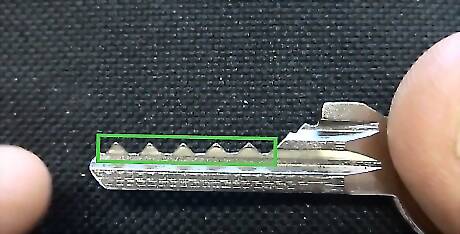
Make sure the teeth are level. File each valley down to the same point along the shaft of the key. If the valleys at the front of the key are deeper than those in the back, the key won’t be able to slide into the lock. If the valleys in the back are deeper, you may have difficulty pulling the key out of the lock after bumping it. There should be a very small triangular depression in the shaft of the key at the bottom of each valley. Locksmiths and services that grind key duplicates are capable of precisely cutting 999 keys, but you might get some strange looks if you ask for this to be done.
Bumping a Lock

Insert the key into the lock. Fit the key into the lock. Push it in until it stops, then pull back slightly until you hear or feel the last pin click. This puts the pins in the right position to be manipulated by the teeth of the modified key. Keys of roughly the same size will often fit any lock with the same mechanism (like a cylindrical lock). Insert the key slowly and carefully to make sure it doesn’t get stuck. The deeper valleys might make it prone to getting caught on the pins.
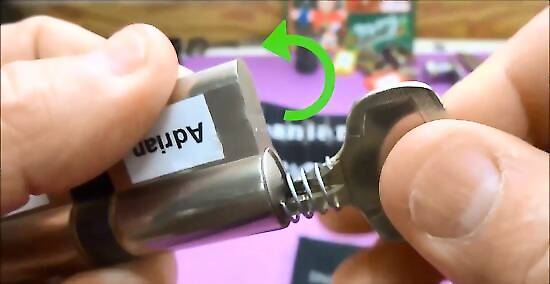
Begin turning the key. Try turning the key in the unlock direction (usually counterclockwise). Keep constant pressure on the key as you work. It won’t move very far initially, but if you’re able to jostle the pins just right with a well-placed strike, the key will effortlessly turn the rest of the way. Grip the key near the teeth to allow yourself room to hit the back end of it. Don’t turn the key too hard. It will be weaker since you removed metal from the body, and twisting it forcefully while striking it might cause it to break off in the lock.
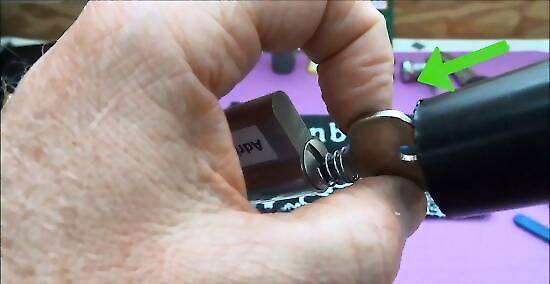
Strike the back of the key with a blunt object. Using a mallet, the handle of a screwdriver or another broad, blunt object, strike the rear edge of the key as you continue trying to turn it in the lock. This is what is known as the “bump.” You’ll need to hit the key quite hard, as the technique requires that that force be transferred through the lock. If you’re successful, the pins inside the lock will jump momentarily, creating enough space for the key to turn the rest of the way. Hit the key directly on the end, not at an angle. The bump won’t work if the key is inserted all the way into the lock. Pull back on the key until you hear the first click before attempting the strike.
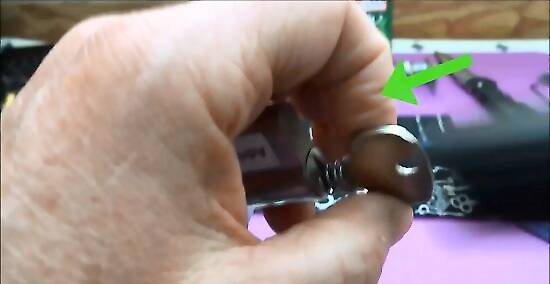
Repeat until the key turns in the lock. If you’re unsuccessful on your first attempt, try wiggling the key and hitting it again. Repeat this process, turning the key in the unlock direction the entire time, until the pins catch. If after multiple attempts the key still won’t budge, remove it from the lock and try inserting it again, pulling back just a little to put it in the right position to dislodge the pins. If you’ve tried over and over and still can’t get the key to turn, either the grooves you filed in the valleys are not the right length or the deadbolt needs to be turned in the opposite direction.
Protecting Your Home From Lock Bumping

Check for signs that your locks are tamper-proof. Most modern locks are designed to protect against lock-picking techniques like bumping. Take a look at the face of your deadbolt to see if a small marking is displayed above or to the side of the key slot. If so, it means your lock is resistant to forced entry measures. The markings themselves will vary, but may take the form of a vertical line, a plus sign or an Underwriter’s Laboratories (UL) seal of security. Ask a hardware specialist for tamper-proof designs when buying new locks.

Have a locksmith modify your locks. Take your locks to be worked on by a professional. Locksmiths can install special heavy duty pins and incorporate additional security features to make your home harder to break into. If the doors to your home are guarded by basic cylinder locks and you’re worried about a break-in, it may be worth the expense to upgrade to more forbidding locks. If you have reason to be especially concerned about lockpicking, consider going with a different type of locking mechanism than the usual cylinder lock.

Buy commercial grade locks. In most hardware and home improvement stores you can purchase light commercial grade locks. These locks, which are typically used by businesses to prevent theft, are made of resilient materials and make use of complex locking mechanisms. A commercial grade lock could make a surprisingly effective deterrent against a would-be burglar. Commercial grade locks will be more expensive on average but provide more trustworthy home defense.

Show signs of a presence in your home. One of the best methods of preventing a break-in is to simply be home, or make it look like someone is. If you have a dog, keep it chained or fenced within sight of the outside of your home. Put up “No Trespassing” or security system signs to ward off intruders, or simply make sure you’re seen coming and going frequently. While this approach isn’t foolproof, it has been shown to make most criminals think better of trying to gain entry to your residence. Leave a TV or lamp on in the front of your home at night or when you have to go out of town to make it appear that someone is home and awake. The majority of break-ins occur through the front door. Make sure you have locks secure enough to stop a brazen attempt to enter your home.

















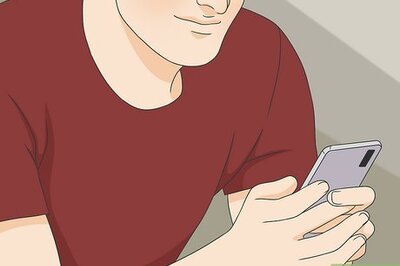


Comments
0 comment